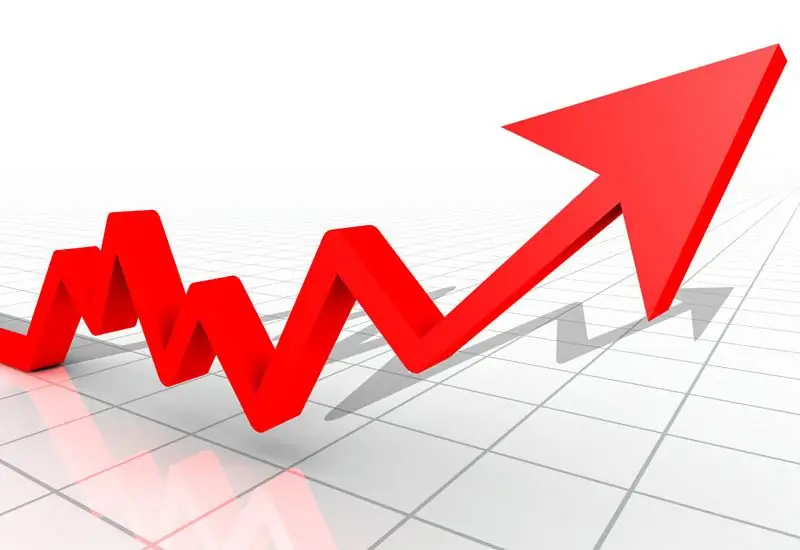2025 Author: Howard Calhoun | [email protected]. Last modified: 2025-01-24 13:10:29
All sorts of crops are grown in Russia, of course, most often using traditional technologies. However, in our country, alternative methods are often used, which make it possible to obtain good yields without causing any damage to nature. One such technology is biodynamic farming. What it is and how such a technique is implemented in practice - we will discuss further.
A bit of history
Harming with the use of biodynamic technology allows, first of all, to include an agricultural farm in the general ecosystem of the surrounding nature. The founder of this alternative method is the Austrian mystic philosopher, esotericist, writer and anthroposophist Rudolf Steiner. Biodynamic agriculture began to develop on the planet once thanks to this researcher.

In 1924, this scientist gave a course of 8 lectures, known as "Lessons in Agriculture", at Koberwitz Castle. At the moment, this work is considered the basis of biodynamic technology. The Demeter organization was also created in the 1920s, the mainthe purpose of which was to popularize and disseminate this idea.
Somewhat later, Steiner's biodynamic farming technology was modernized and improved. At the same time, scientists such as Alex Podolinsky, Pierre Mason, Nicolas Joly, Enzo Nastati made a great contribution to the development of this technique.
Biodynamic farming: definition
Before you start studying Steiner's own eco-technology, you need, of course, to understand the terminology. They call biodynamics an alternative direction of agriculture, the basis of which is the interconnection and integrity of all life on earth. Crop-growing enterprises working according to this method are organized as a single organism, part of which are:
- soil with its inhabitants;
- plants;
- adjacent meadows, rivers and forests;
- sky and weather;
- stars and distant galaxies;
- man.
It is believed that the state of he alth of each of these sectors of the biodynamic economy is reflected in the entire "organism" as a whole.
Guidelines
Rudolf Steiner, the founder of biodynamic farming, among other things, identified five main postulates of this technique:
- using only natural organic fertilizers to improve soil properties;
- use of homeopathic doses of auxiliary BD preparations from herbs, mountain minerals and manure to increase yields and improve the quality of finished products;
- use of speci altechnologies to control pests, diseases and weeds, taking into account their role in the ecosystem;
- understanding the infinity of the spiritual and material world around.

Main differences from agrochemistry
Of course, biodynamic farming technology is similar to traditional farming methods. But there are significant differences between the two methods. These include, for example:
- ban on the use of pesticides, mineral fertilizers and pesticides;
- choosing the timing of various types of agricultural work in accordance with the movement of planets and stars.
Space influence
Farmers are guided in farming using this technology, including a special database-calendar, published annually and developed by German researchers Maria and Matthias Thun. This cosmic scheme works according to a rather simple principle.
As with other alternative methods, in some cases, the nodal points of the Sun and Moon can be taken into account when applying biodynamic farming technology. For example, it is believed that when the night luminary decreases, you need to plant root crops. With the growing moon, crops with terrestrial fruits are sown. However, such a scheme still does not play a decisive role in biodynamics. In this case, other methods of harmonizing landings and Space are the main ones.
As you know, every month the Moon passes 12 zodiac signs. It is this green manure cycle that forms the basis of the database calendar. All signs of the zodiactraditionally classified into four large groups according to the elements - Fire, Air, Water and Earth. And all of them correspond to certain parts of the plant:
- roots - Earth;
- leaves - Water;
- flowers - Air;
- fruit - Fire.
So, for example, days corresponding to roots can be chosen for planting carrots, lettuce - leaves, etc. Not only sowing dates, but also digging, harrowing, harvest, etc.

Drugs
To improve soil properties when farming using biodynamic technology, as already mentioned, special DB compositions are used. In total, there are several such drugs:
- Horn Silicium Compound 501. This preparation is used in the summer when plants are actively developing green parts, flowers and fruits. It is used, like other similar tools, taking into account the database calendar. This composition is useful primarily because it helps the formation of various parts of plants. It also prevents lodging, improves the transportability of fruits and their commercial qualities.
- Horn dung preparation 500. This product is used in fields cultivated with biodynamic technology in spring and autumn. It has a beneficial effect mainly on the root system of plants. After its introduction in the soil, the number of worms, beneficial fungi and bacteria increases. Also, the use of this drug allows you to increase the percentage of humus in the earth.
- Barrel compost. This composition is also applied to the soil in spring and autumn immediately after the application of the horn manure preparation. Sometimes it can be used at other times as well. When barrel compost is introduced into the soil, the activity of beneficial microorganisms is stimulated. Also, this fertilizer improves the structure of the earth. The use of barrel compost helps increase yields and improve fruit quality.
Also in biodynamic farming, preparations 502-507 can be used. They are made from six types of herbs:
- daisies;
- yarrow;
- nettles;
- oak;
- dandelion;
- valerian.
To activate the effectiveness of some of these herbs, special tree bark shells can be used in the production of BD drugs. The main purpose of these funds is to regulate the decomposition of organic matter in the soil and the formation of humus.
These drugs themselves are not applied directly to the ground. They are used as catalysts, adding to composts in a minimal amount. Also, adherents of biodynamic technology believe that these funds can serve as conductors of the forces of the planets of the solar system.
What animal parts are used for
Biodynamic farming, the description of the technology of which was briefly given above, previously caused public dissatisfaction among other things. In the last century, its adherents used special fermentation technologies in the manufacture of BD supplements, in which parts of animal organs were used as catalysts.

This was due to the fact that, according to Steiner's philosophy, the land during management, in fact, should not only improve, but "revive". For example, it is known that chamomile flowers in medicine are used to treat the intestines. The fact is generally recognized. Therefore, when preparing a BD preparation from this plant, adherents of the technology often used a part of the small intestine of cattle. This was done in order to get the most harmonious remedy that can revitalize the soil.
Currently, instead of traditional BD-preparations, the recipes of which were created at the beginning of the last century, vegetarian ones are most often used in biodynamics. Instead of animal organs, in the production of such drugs in our time, in most cases, the bark of trees is used.
Special Techniques
In addition to natural fertilizers and BD-additives, to improve the efficiency of farming when using this technology, the following practices are practiced:
- crop rotation;
- using satellite plants;
- use of mixed plantings.
In order to keep moisture in the ground in the fields, such farms can plant hedges, alternate high and low plants.
Main Tasks
Of course, the priority goal of farming using this alternative methodology is to obtain environmentally friendly, high-quality and he althy products.
Vegetables and fruits grown in such farms:
- keep fresh longer;
- have better taste than regular ones;
- contain more dry matter;
- contain less nitrates.
Eating BD products not only improves human he alth, but also reduces the likelihood of allergies to any other food. Biodynamic vegetables, grains, fruits, etc. are sold with a certificate from the Demeter Society. Also in Russia, a new brand of DB-products "Pure Dew" was registered not so long ago.
Another goal of biodynamic technology is to preserve nature in its original form. Chemical preparations used in modern agriculture, of course, cause enormous damage to the soil and the environment. Adherents of biodynamics believe that the use of this technology can correct the existing situation without harm to the economy and painlessly for the population.

Modern Research
So, biodynamic farming is a technology that allows you to conserve nature and obtain environmentally friendly products. This technique originated at the beginning of the last century. But of course, in our time, biodynamics continues to improve.
At the moment, there are several laboratories involved in the development of this management technology. The most famous of them are:
- Colisko Institute (USA);
- DB Institute in Germany;
- Michael Fields Institute (USA);
- Biodynamic Association of Denmark;
- Josephine Porter Institute (USA).
These workorganizations and here in Russia. One of them is called "Biodynamics" and is located in St. Petersburg. There are also institutions in our country such as Agrosophia in Moscow and the Biodynamic Center in Irkutsk. There are also biodynamic clubs in Russia in many cities.
Kuznetsov's Biodynamic Agriculture
One of the innovators who invested a lot of effort in the development of this technology in our country is the head of the Altai fruit nursery "Mikobiotech" AI Kuznetsov. This researcher's farm grows organic, high-quality agricultural products.
One of the features of Kuznetsov's biodynamic farming is the use of microforming fungi. Also, this innovator invented his own version of the closed ground. With the use of Kuznetsov's greenhouses, very large areas of land can be covered in a short time. Another innovation of this researcher was the use of mulch as a source of CO2 needed by plants for photosynthesis and rapid development. Currently, the farm is developing bioagrotechniques for small farms, eco-villages and ordinary summer cottages.
Biodynamics Tuzhilin
This researcher has written several books, which, among other things, deal with the problem of the negative impact on the human body of modern agricultural products. Also S. Yu. Tuzhilin is the author of the work "Practical Biodynamics in Siberia".
This explorer also has his own farm. It is located 100 km from Irkutsk and 10 km fromthe nearest village. S. Yu. Tuzhilin's book on biodynamic farming describes in detail what DB technology actually is, and also gives advice on practical farming using this technique.
Alex Podolinsky
It was this Austrian researcher who patronized the organization "Demeter" of biodynamic agriculture, created at the beginning of the last century. Alex Podolinsky currently lives and cultivates the land in his homeland. The name of this innovator is a symbol of the practical management of the economy according to the methods of biodynamics. It was this scientist, continuing the work of Rudolf Steiner, who for the first time in practice demonstrated the effectiveness of this modern technology.

Biotechnology by nature
This innovative DB-method allows very large yields to be obtained on the plots. Its basis is the use of organic mulch to improve soil properties and increase yields in the same way as it happens in nature. Litter can be made using this technology from grass, leaves, chopped branches, needles, etc.
Saprophytes and saprophages are widely used to create the highest quality mulch in biodynamic farming by natural type:
- microbes;
- earthworms;
- mushrooms, etc.
In the course of their life, they secrete digestive juices into the mulch, which contain enzymes. It is on such beddings of various kindsvegetation and develops in nature. Under artificial conditions, the farmer can only activate, maintain and strengthen these processes.
Saprophytes can be introduced into mulch in several ways. Most often, adherents of the biodynamic system of agriculture first scatter a thin layer of manure under the plants as a leaven, which contains various kinds of fungi and bacteria. Next, the actual mulch is laid.
Also, the litter can be populated with saprophytes using special ready-made microbiological preparations. Mulch is watered with such means several times a season.
Sometimes ordinary cap mushrooms are also used as saprophytes in biodynamics. This is done when “indigestible” organic matter is used for bedding - sawdust, cellulose, husks, etc. When using this technology, mushroom caps are soaked in water. Then plantings are watered with this infusion. After a year or two, fruiting bodies sprout in the treated area. Almost any mushroom is allowed to be used for mulch, even inedible ones, for example, fly agaric.

Support the vital activity of saprophytes in the mulch, keeping it moist and at a slightly elevated temperature in various ways. To do this, for example, sand, pieces of linoleum, film are laid on top of the litter.
Is it possible to use on an industrial scale
Of course, most often the principles of biodynamics are implemented on relatively small farms. However, there is an example of the use of this technology in industrialagriculture. Such methods have been used in the vineyards and orchards of JSC "Pinsk wine-making plant" since 2006. The total planting area of this enterprise is 70 hectares.
Applied to industrial agriculture, biodynamic technology looks something like this:
- only disc harrow is used in soil preparation;
- seedlings are planted under a shovel, hydraulic drill or using mechanization;
- every year 1 kg of fresh manure is scattered around each seedling with limited direct contact;
- planting is mulched with straw, grass, pressings of the main production;
- careful monitoring of soil composition is carried out in order to timely introduce organic matter;
- grass is mowed between rows (green mass remains in place);
- pruned vines are run through a crusher and used as mulch.
No herbicides are ever used to control weeds on this farm. Of course, mineral fertilizers are not used on the fields of society either. Thanks to the use of this technology, the Pinsk Winery OJSC is able to supply organic fruits and wine to the market.
Recommended:
Mind management: concept, definition, basic principles and thematic books

Few modern people know how to manage their time. Despite the popularity of time management, people get lost in the flow of information, and they can’t manage to fix their lives. And all why? For the reason that they do not have a single system for structuring information. Mind management will help you bring order to eternal chaos
Porter's strategies: basic strategies, basic principles, features

Michael Porter is a renowned economist, consultant, researcher, teacher, lecturer and author of numerous books. who developed their own competition strategies. They take into account the size of the market and features of competitive advantages. These strategies are detailed in the article
Company strategy is Definition of the term, goals, objectives, formation process

The basis of the planning process is the choice of the company's strategy. This is a prerequisite for the harmonious development of the organization. Strategic planning allows you to set the main goals of the company, to identify ways to achieve them. What is the strategy, the features of its choice of implementation will be discussed further
TQM principles, goals and objectives

This article will answer questions about what the concept of TQM (Total quality management) is, what its basic principles are, and it will also be possible to find out the methodology for implementing the TQM philosophy and understand how this management process will affect the activities of the organization
Logistics concept: concept, basic provisions, goals, objectives, stages of development and application

In the article we will talk about the concept of logistics. We will consider this concept in detail, and also try to understand the intricacies of logistics processes. In the modern world, this area occupies a rather significant place, but few people have a sufficient idea about it

